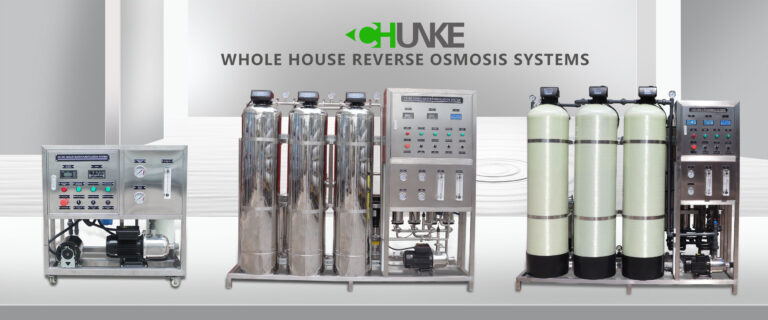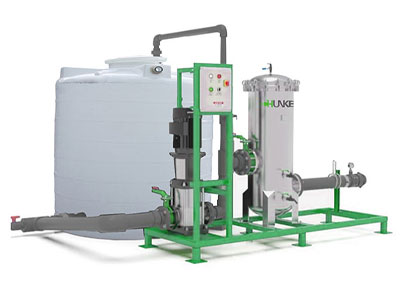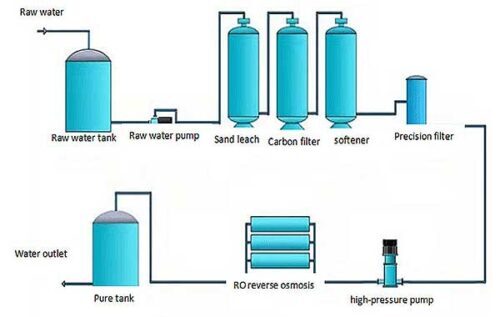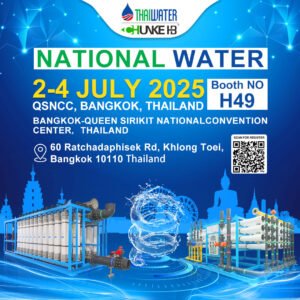We will explain how to use ro membrane longer and changing ro membranes with all details. RO membrane elements are the heart of your Reverse Osmosis (RO) filtration system. RO membranes have semi-permeable surface that allows water to pass through while selectively rejecting most contaminants, dirts, bacteria, viruses from the feed water source. The elements can filter virtually all suspended and dissolved contaminants and quickly plug when used for “direct filtration.” Hence, a “cross-flow” configuration is typical where a portion of water is sent to drain to limit fouling or scaling.
Why should I change my Reverse Osmosis Membranes?
There are a variety of environments and variables that can affect the rate that your membranes degrade. Membranes that need to be cleaned or replaced will let you know in the form of performance data when you see that your energy consumption has increased or if you notice higher pressures are required to make the same amount of water. Some changes, like decreased salt rejection, are symptoms of permanent damage like chemical attack and cannot be recovered with cleaning. They are important issues changing ro membranes.

While RO systems can be lower energy consumers than other purification methods like distillation, you can still see increased costs by running membranes that aren’t performing as they should. Keep in mind that if you decide not to change your membranes for an extended amount of time, you risk the service life of every other component and downstream equipment in your system.
How to clean RO membranes?
Cleaning your membranes is a great way to extend their service life and your chaning ro membrane period becomes longer. Membranes that are cleaned and well maintained will save your money in reduced energy costs, less waste, and better product quality. If you don’t have a membrane cleaning program in place, now, call us and we supply to you best solution to use your membrane longer. Different cleaning procedures are used to remove different types of contamination, and elements can be cleaning in place (CIP) with the right equipment or removed and cleaned off-site.

For example, acids are often using to dissolve hardness scaling, bases (caustic) are often used to remove organic fouling, surfactants and chelating agents are used to remove fouling or heavy metals. In addition, there are many suppliers of proprietary cleaning solutions that address multiple contaminants simultaneously. Keep in mind that it’s not always possible to gain back all the baseline performance of the element, and aggressive cleaning can damage the membrane surface. Therefore, the best strategy for scale and fouling is to prevent it from forming in the first place.
Chunke is professional reverse osmosis system producer from China with greate experience in water treatment industry. To keep clean your membrane, we are adding some chemical dosing equipment into your system for scaling and fouling problem. So, our CIP system works more efficiently to wash RO membrane and use reverse osmosis membrane longer. But to get best result, you must have source water analysis report, it helps us to design system with more accuracy and allow you use your ro water plant long and sustainable.

1) RO Permeate Quality:
When we design reverse osmosis system, we will give to you estimated RO Permeate output quality. You can check permeate (pure water) quality with conductivity meter. If you see that there is increasing on conductivity, it means that your membranes need to clean.
2) RO Permeate Recovery Rate:
Typically 60-75% for commercial/industrial ROs and is dictated by the pressure vessel array, membrane type, and feedwater quality. But this value depends on source water TDS, for example seawater recovery rate is around 45-60%. Recovery is set by adjusting the pump driving pressure and balancing the reject valves. Adjustments are normally required due to temperature changes but can be affected by fouling or scale formation on the membranes. Too much recovery accelerates membrane fouling and scale formation.If your recovery rate is decreasing, it is better to wash your membrane with CIP system then check the output permeate capacity.
3) RO Reject Flow Rate:
If your RO membrane starts clogging, your reject water (concentrated) output increase, permeate (pure, clean) water capacity is decreasing. Too little flow accelerates membrane fouling. System recovery can be increased by diverting a portion of this flow back to the front of the unit with a tradeoff in product quality and increased scale formation risk (due to salt concentration cycling within the RO).
4) RO Normalized Driving Pressure:
Used to determine when to clean or replace RO membrane elements. Normalization calculations are used to offset the effects of temperature and osmotic back pressure when evaluating RO performance data. Baseline readings are taken with new or freshly cleaned elements and a 10-15% increase in driving pressure from fouling, biofilm, or scale formation is often used to trigger a cleaning procedure.
If you want to get more details info about fouling and scaling you can watch our video about Fouling and Scalling Problem on Reverse Osmosis Plant or you can read our article (fouling and scaling problem on reverse osmosis membrane filtration.
What Brand of RO Membranes Should I Use?
Now, there are plenty of RO membranes in market. Most of our projects, we are preferring DOW Filmtec, Toray, Vontron, Hydranautics. Their quality is nearly same, but each membrane has some better futures in special conditions.
You can watch our video to compare some Reverse Osmosis Membrane Brands before changing ro membranes. Chunke can suggest to you best RO Membranes as regards to your raw water source and application.
Can I Change my Membranes, or Should my Service Partner?
Changing RO membrane elements is a simple task that is labor-intensive, includes repetitive steps that can be overlooked, and sometimes requires unusual handling when using specialized membranes. Therefore, Chunke recommends a professional field service technician performs or leads the task to ensure no mistakes are made.
Here, we have video how to change ro membrane in commercial reverse osmosis system. Frst, watching our video and then you decide you can do it by yourself or not.
Where I can find Good and Professional RO Plant manufacturer in China?

Guangzhou Chunke Environmental Technology Co. Ltd. is professional and high experienced RO Plant Manufacturer in China since 2009. You can buy best quality reverse osmosis system with affordable price. Please fill in form and get your free quote, TODAY!!!

